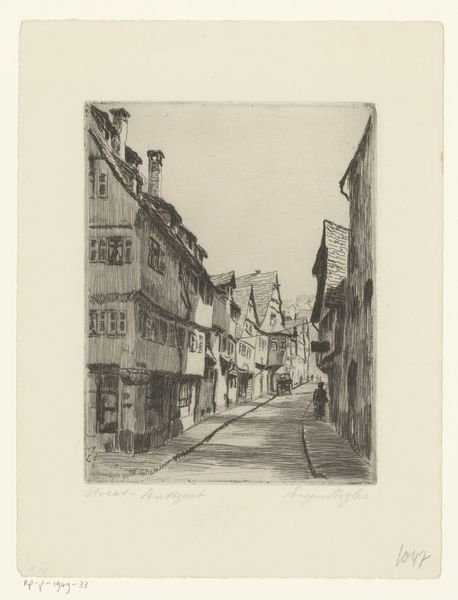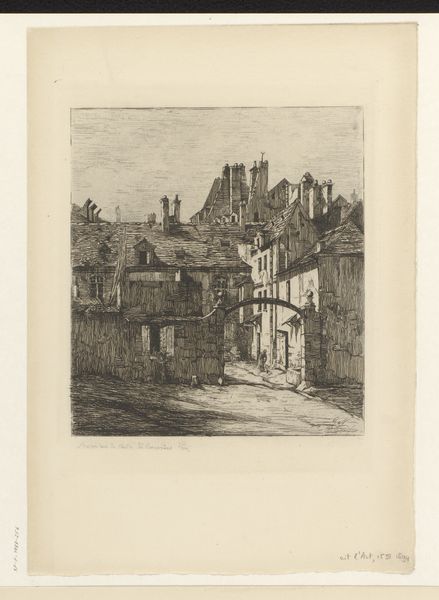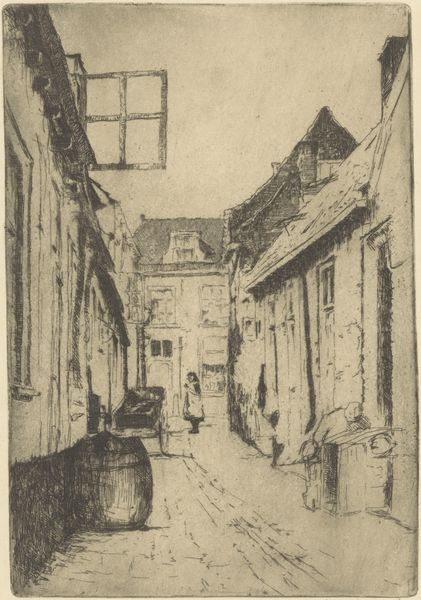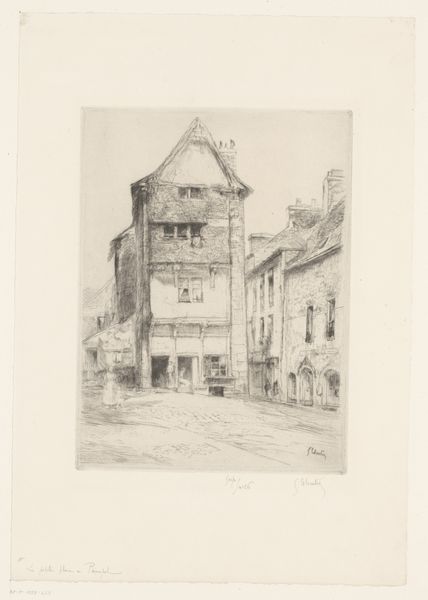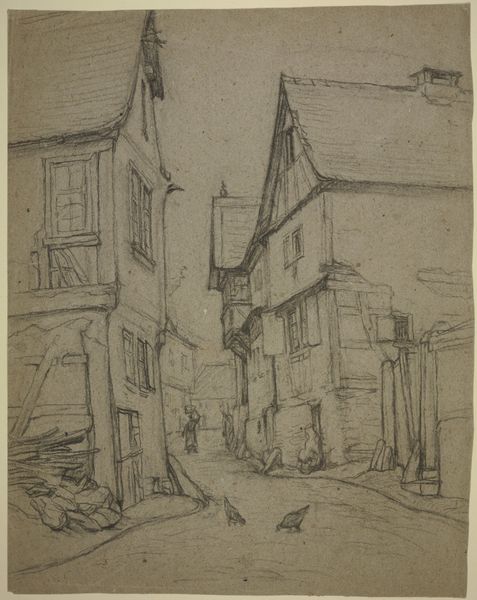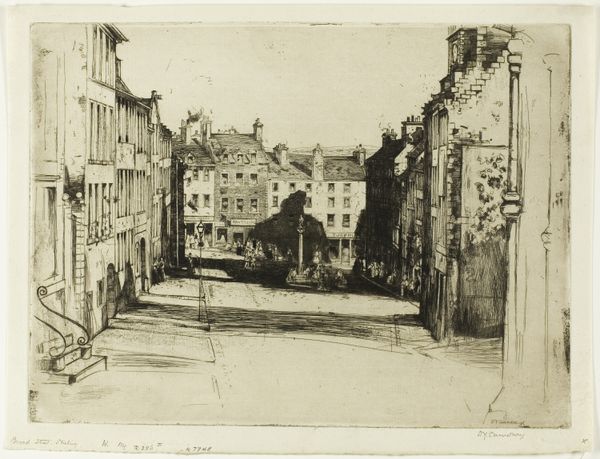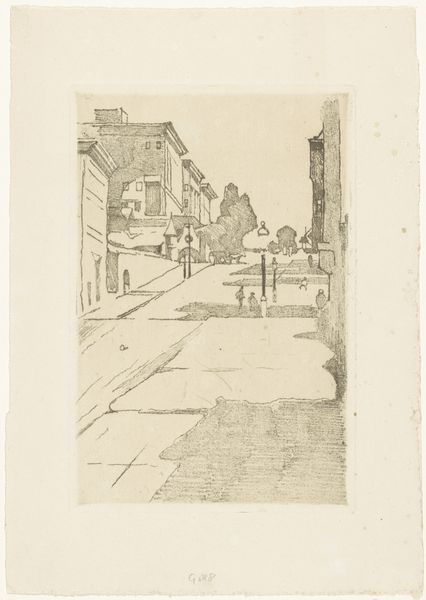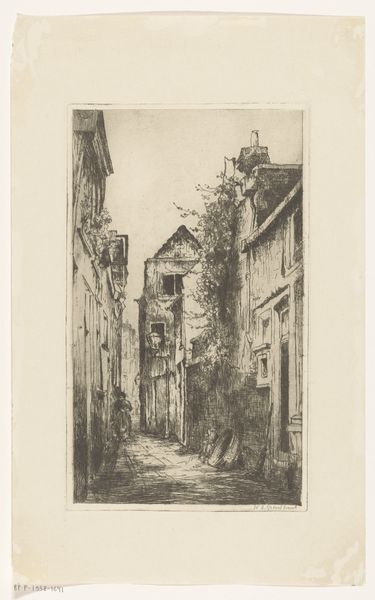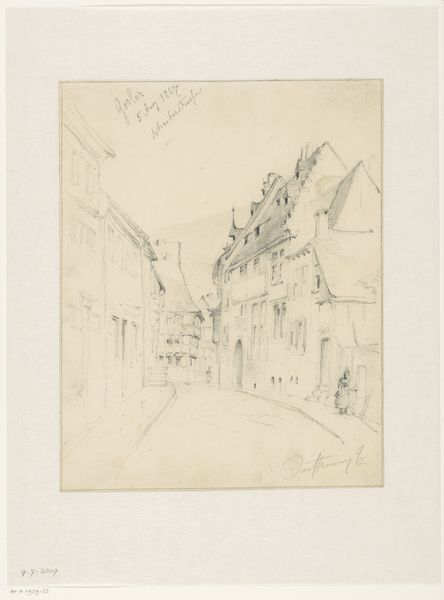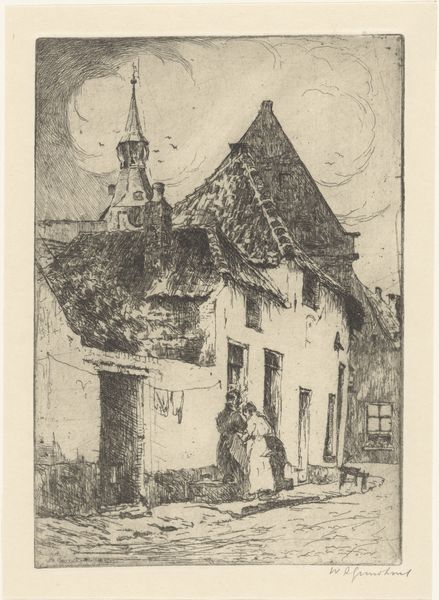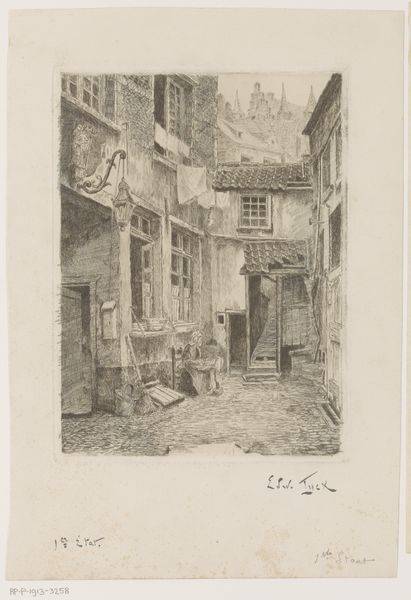
Dimensions: 169 × 160 mm (image/plate); 222 × 198 mm (sheet)
Copyright: Public Domain
Curator: Here we have Gustave Leheutre's 1896 etching, "The Little Cloister Street, Troyes," currently housed at the Art Institute of Chicago. It's a classic example of late 19th-century printmaking. Editor: It's remarkably delicate. The density of those etched lines creates such an interesting play of light and shadow. The architecture itself, those half-timbered buildings, practically leaps off the paper. Curator: Yes, Leheutre clearly wants to capture the textures and feeling of daily life. This scene depicts the street and architecture of a northern town; the everyday modernized and elevated. Etchings like these were popular amongst the rising middle classes. The commodification of art had really expanded. Editor: Right, it's definitely less about a grand statement than it is about intimate observation. I am intrigued by the use of line quality to create such atmospheric perspective. The figures at the top of the hill seem soft, hazy even, while the textures of the buildings immediately adjacent seem coarse by comparison. Curator: You can see the rise of impressionism as a driving aesthetic force here as well; note that Leheutre has opted for everyday scenes that celebrate regional architectural distinctiveness. Printmaking and etchings provided an intimate way for collectors to celebrate and cherish representations of regionalist landscapes. Editor: You're right, it does have an appealing quality to it. Look at how he uses varying depths of etching to create this atmospheric effect, so that our vision almost literally fades toward the horizon! And consider that composition: those powerful horizontals of the buildings play such an evocative compositional contrast with the severe diagonal of the receding road. It makes for an intriguing push-and-pull dynamic. Curator: Yes! Leheutre is engaging here with that broader 19th-century interest in the texture of a specific time and place; but it is all deeply steeped in broader artistic movements that seek to give this subject some sort of historical validity. Editor: Exactly! He distills a very complicated world to only line and shadow. In short order, his deft application creates an appealing image and overall interesting spatial effect. Curator: Absolutely. A beautiful example of the public appetite for landscape as representative of the times and its intimate charm, a sentiment of looking for the past through art objects. Editor: A charming convergence of technique, composition and content all neatly unified.
Comments
No comments
Be the first to comment and join the conversation on the ultimate creative platform.
